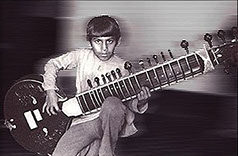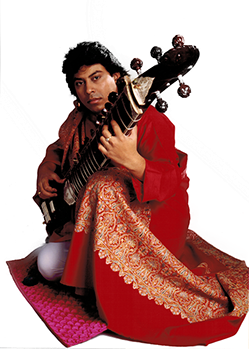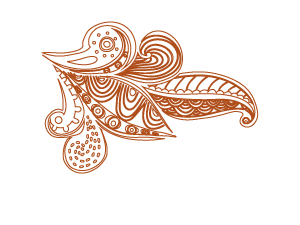






“His presence added a sense of history…”
“A master of the sitar…”
- The Star Herald, USA
“…Indian music at its top level…”
“Mr. Khan’s sitar and tabla magic…was barely stoppable.”
- The Stroestring in Pacem, USA
“...star in the world of classical music…”
“…the thunderous ovation never ceased throughout his performance…”
- The Chandigarh Tribune, INDIA
“Virtuoso…Classical purity…Astonishing individuality…”
“…intellectual and poetic…”
“Creator as well as performer…”
- Washington Post, USA
“…the rhythmic complexity of the music…enthralled the audience.”
- Cork Examiner, IRELAND
“The tabla…was absolutely superb.”
“…evoked spontaneous applause…”
- The Times, LONDON
“…lively performance…skillfully manages to steal the audience’s attention…”
- Bangladesh Observer
Surbahar means ‘melody of Spring’ and the instrument was invented by Sahebdad Khan, the great-great-grandfather of Mr. Khan. The surbahar, which is played in the noble style of Dhrupad, with its wide range of over four octaves, its richness of overtones, its majesty of utterance, can be regarded as the most magnificent of all Indian instruments, capable of elevating the listener to a very high level of spiritual experience.
Shafaat at age 8 practicing Surbahar

The surbahar is in effect a bass sitar and is played in a similar manner. The resonating chamber again consists of a gourd but in this case the gourd, instead of being sliced downwards as in the sitar, is cut across the top so that the back is flat. The neck is wider and longer than that of the sitar but its frets are fixed.
Thus, because the instrument is larger and has longer strings the sound can be held much longer and this quality is further enhanced by pulling the strings across the frets, at a right angle to the neck and so raising the pitch. In addition to its six metal strings, of which four carry the melody and two the drone, and thirteen sympathetic strings underneath, the surbahar has two extra bass strings which give an extra lower octave. Because the surbahar produces a deep, dignified sound it lends itself to the alap, jorh, and jhala portions of a raga.
Instrument: the surbahar

With each instrument, assiduous practice is necessary in order to develop the strength and technique to control the intonation and quality of the notes produced from them. Mastership over any instrument requires years of intensive and continuous practice (riyaz) and training (talim). This is a lifelong process for the true Ustads and Pandits.
